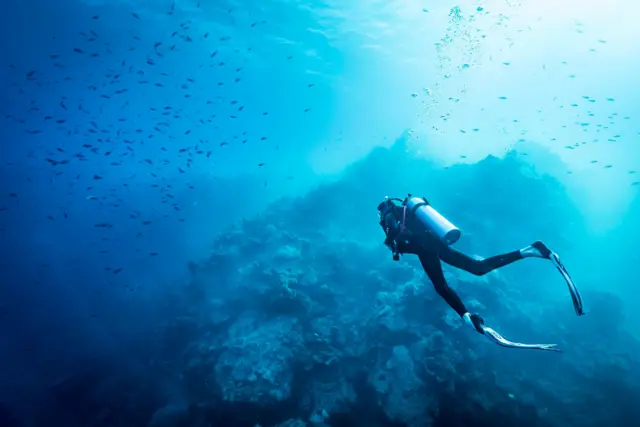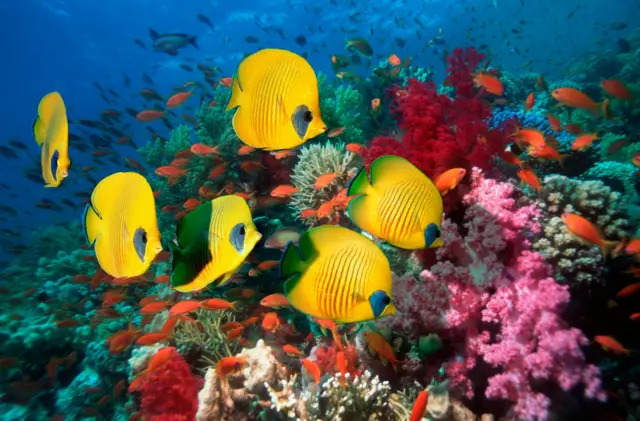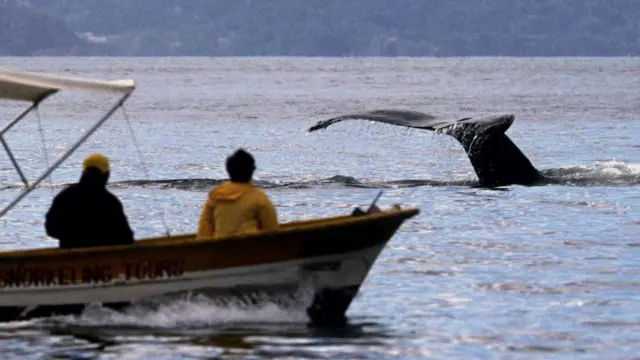
Main reasons Why humans can't drink sea water unlike whales and dolphins
The doubt of whether or not to drink sea water is the most torturous diatribe that a castaway can face.
And no wonder. It must be awful to be dying of thirst when you can’t even take a sip of the tons of water around you.
But we must not fall into temptation.
The seafaring world is well aware of the danger that would be involved in succumbing to this imperious desire.
Drinking sea water, far from hydrating us, dehydrates us… And at dizzying speeds.
What happens when we lose water?
From a chemical point of view, humans (like the rest of the living organisms on the planet) are unstable systems basically made up of water with, among other things, dissolved salts.
Water is the medium in which all our biochemical reactions take place and, therefore, the essential element to guarantee our metabolic subsistence.
Since we are in a terrestrial (dry) environment, water tends to escape from our internal environment, which leads to dehydration and, consequently, death.
If this does not happen, it is because evolution has selected, throughout our lineage, a magnificent covering that, like a raincoat, does not let water through.
It is the skin, and its waterproofing capacity is due to a protein located in its outermost layers: keratin.

Image source,Getty Images
However, the human body is far from being a watertight compartment.
In fact, water is continually evaporating through areas that must be kept moist to be functional (eyes, nostrils, mouth, urethra, anus and vagina).
On the other hand, we eliminate our poisonous nitrogenous waste (resulting from protein catabolism) in the form of urine. And that is basically urea diluted in water.
Finally, the “keratin raincoat” has to have pores so that we can sweat, since it is our way of cooling ourselves when it is hot.
Whatever the cause, the reality is that we continually lose our precious and essential liquid.
Recovering lost water means “stealing” it from our main water reservoir, the blood, which reduces blood volume and, consequently, blood pressure.
This dangerous situation, detected by cardiopulmonary receptors and baroreceptors, activates the renin-angiotensin system (RAS) and decreases atrial natriuretic peptide.
Both actions are dipsogenic, that is, they trigger the sensation of thirst in the brain.
Once alerted, we react: we drink water, absorb it through the intestine into the bloodstream via capillaries, recover blood volume and everything returns to balance.
What happens if the water has salt?
If we drink sea water, the intestine will absorb it as is.
This means that water will reach the blood, but also salts, mainly sodium chloride or common salt.
The kidneys will try to maintain osmotic balance at all costs and will tend to eliminate excess salt through urine.
If we translate this into numbers, the human kidney can eliminate up to about 6 grams of sodium from the blood in each liter of urine excreted.

Image source,Getty Images
Since sea water contains about 12 grams of sodium per liter, drinking a liter of salt water will accumulate 6 more grams of salt without its equivalent diluting water.
In other words, to eliminate the salt from a glass of sea water we would have to excrete two glasses of urine, which would make us more dehydrated than before drinking.
The serious thing is that, in addition to sodium chloride, seawater contains magnesium sulphate, a molecule that retains water inside the intestine, preventing its absorption.
In fact, it is the basic component of a very popular type of laxatives.
Poor castaway! He’s thirstier than ever, and he also has diarrhea.
What about fish, turtles and crocodiles?
Evolution has solved this osmotic problem with very different strategies.
At first, we might think that fish, living “in water”, do not have to fight against dehydration.
This is not true. Although depending on the osmotic characteristics of each group, and always in smaller quantities than a terrestrial vertebrate, their physiology also requires the need to replenish water.
And that means they also need to remove excess sodium ions.
Bony fish do not urinate: they do so through their gills. Sharks and their brethren, although they also have gills, are more original and eliminate salts through their faeces.
They achieve this by filtering their blood twice: first in the kidneys (like any other vertebrate) and then in the rectal gland, a contractile diverticulum near the anus (cloaca).

Image source,Getty Images
These glands, which concentrate and secrete salt, are also found in other vertebrates that feed and live in the sea, although they are located in other anatomical areas.
Thus, while seabirds and some marine reptiles place them nasally, some sea turtles have them in the eye sockets, while sea snakes locate them under the tongue and Asian and North American saltwater crocodiles locate them on the tongue.
The whales and dolphins option
Of this diverse and varied collection of ultra-salty poop, snot, tears and saliva, which method do marine mammals use?
Well, surprisingly, they do not have any type of salt gland.
In fact, they do not have extrarenal salt-secreting organs.
We might think, then, that they must have very efficient kidneys capable of producing very salty urine.
Well, despite the fact that their urine is actually very hypertonic (concentrated), sea lions, seals, whales, porpoises, orcas and dolphins have opted for a very curious alternative solution: not drinking water.
Their surprisingly different strategy is to “scrounge” (borrow) the osmoregulatory efforts of their prey. And they do this in two ways.
On the one hand, the fluids of the animal they have just hunted (mainly its blood) are their main source of water.
On the other hand, they generate water biochemically from the “flesh” of the animal they are eating. We could say that it is a “metabolic water” that is generated as a star product of their biochemistry.
The process is simple. Carbohydrates, fats and proteins from the prey are digested in the stomach of the cetacean (or pinniped, if we think of a seal instead of a dolphin), absorbed in its intestine and distributed through its blood to all the cells of its body.
There, already degraded into tricarboxylic acids, they enter the prodigious biological machines that are the mitochondria to obtain energy and something else: very valuable hydrogen ions (H⁺).
All that remains is to add the H+ with the oxygen they breathe (O₂) to achieve the miracle: H₂0.
Although this process, called cellular respiration, occurs widely in animals (as aerobic organisms that we are), it does not have the same relative value in all of them.
For an animal that “drinks”, the water molecules generated are “surplus” elements that are directly eliminated by generating more urine.
On the contrary, for marine mammals mitochondria would be authentic “biochemical philosopher’s stones” capable of generating the most precious of treasures: water.
*A. Victoria de Andrés Fernández is a Professor in the Department of Animal Biology at the University of Malaga.
This article was first published on The Conversation and is reproduced under a Creative Commons license. Click here to read the original version.






